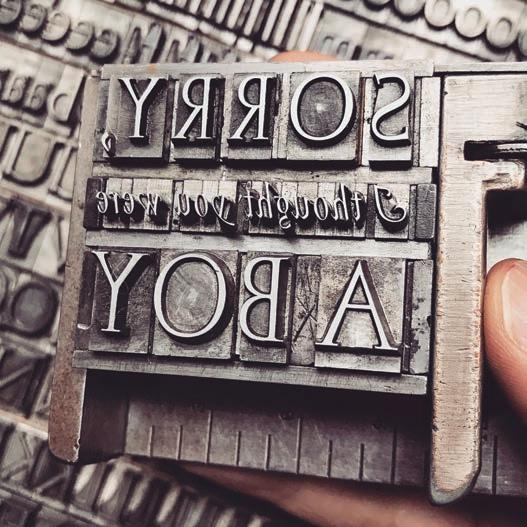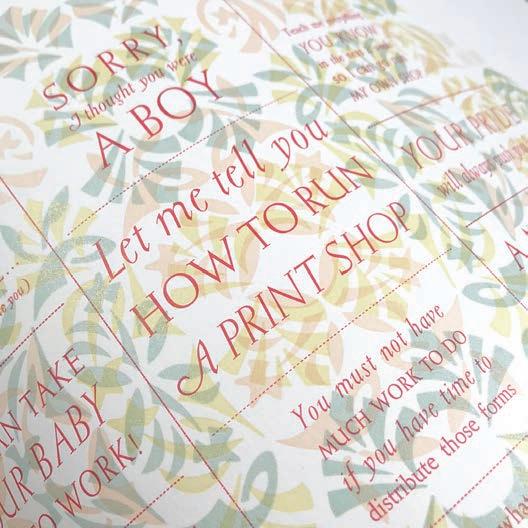
2 minute read
Fernie Fix March 2020
Trading Places by MICHAEL HEPHER

ARTWORK BY JEN FARRELL
Advertisement
When I got my first vintage press in 2003, one of the people already making waves in the modern letterpress community was Jennifer Farrell of Starshaped Press. After learning the basics in Chicago’s independent media scene, in 1999 she founded her own print shop. With talent, tenacity and hard-work, modern pioneers like Jen have pushed the medium forward from obscurity into a vibrant and growing historic craft—laid on a foundation of knowledge sharing and built back to legitimacy through innovation.
I set out to write this article about how progressive the letterpress community has been at supporting generational talents like Jen regardless of gender, but what I’ve learned has been startling and discouraging: we still have so far to go. It turns out that my own male privilege has me seeing my own craft through a grimy, rose-coloured lens.
In m y dialogue with Jen about her experience I have discovered that through her career as a printmaker she has faced, and continues to face, all kinds misogyny, prejudice, and discrimination. She has been passed over, pushed aside and undervalued by gatekeepers in the arts world and business world alike. She sees less accomplished men being considered first for shows. She sees women being offered less for equivalent projects—it is assumed women will be grateful for underpaid opportunities despite their talent or accomplishments. Even now, it seems that many men who call themselves ‘woke’ do so to appear progressive, but do not take any action to give substance to their words.
As male in a small-town arts community, I’m an unlikely minority. At any given artists’ gathering I’m often one of few men, and I’m invariably surrounded by creative, talented, competent, hard-working, and knowledgeable women. When we discuss our process or technique, we discover our differences are irrelevant: we are just humans pursuing a craft. Our art scene, and subsequently our lives, are richer because of the inclusion of all ways of seeing art. In Fernie, without our bold women, our arts scene would be all but non-existent. As an artist I’ve had to fight for my place in the greater art world, but the strong women around me have never made me fight for my place amongst them. How much harder would it be if I had to fight for gender equity also?
I find it strange that w e still struggle to value humans based on superficial things like gender or ethnicity. We consider ourselves to be rational beings—do we not have enough examples of people that break these barriers to consider them irrelevant? How many Jen Farrells do we need to know before we respect the women we work with? Why do we drag our feet about

